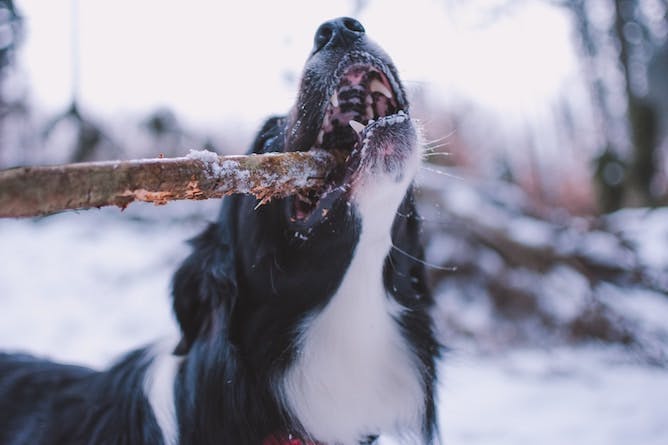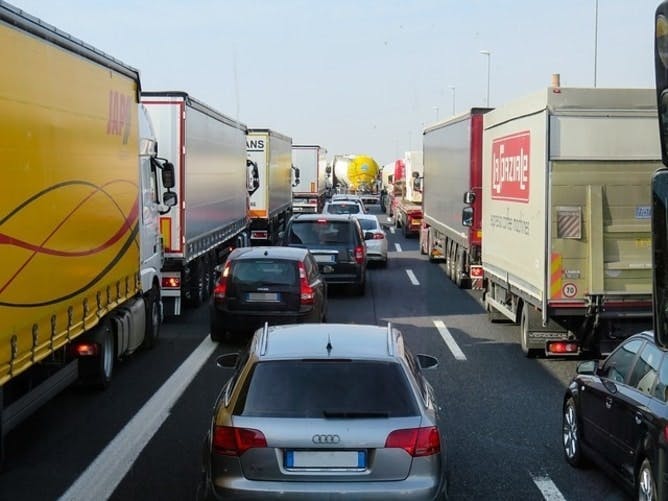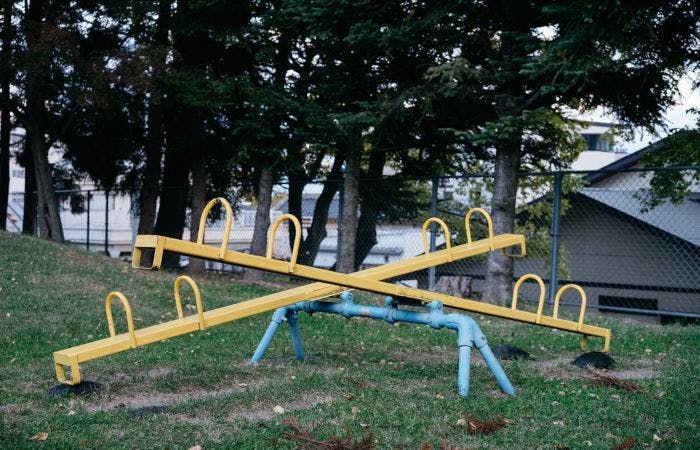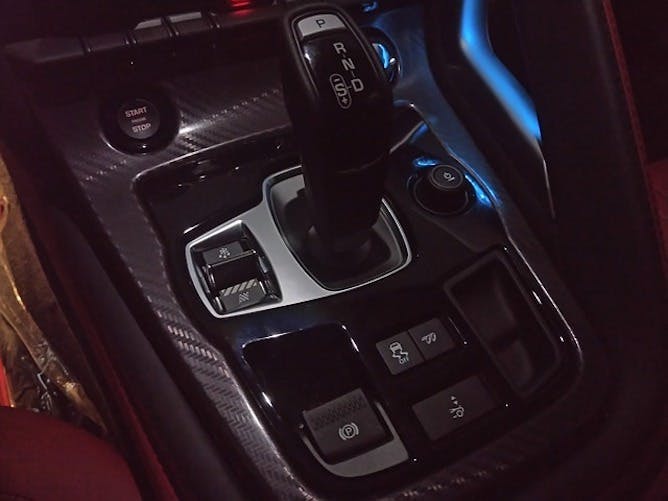
Getting to grips with clutch control is one of the most difficult parts of learning to drive a manual car. It’s also essential to passing your test, as it enables you to pull off, drive at low speeds and do hill starts—all without stalling or lurching the vehicle forward. Most drivers find that clutch control eventually becomes second nature, but it can take a while to get there. So, to help you out, we’ve put together 5 top tips to help you master the skill.
But first, here’s what clutch control actually is, how to find that all important biting point, and how to adapt your technique for different types of journeys.
What is clutch control?
In a very simple nutshell, your clutch connects the power from your engine to your wheels, via the gearbox. Pressing the clutch all the way down disengages the engine from the wheels; raising the clutch, when you're in gear, starts to reconnect them.
You need to control how this power is transferred so that you can control your car at low speeds—such as when you're pulling away—and make sure that you don’t stall (let your engine die). Stalling is inconvenient, but it can also be dangerous. If there are cars behind you when you stall, or if you stall when pulling out at a junction or onto a roundabout, you leave yourself very vulnerable to other traffic. That’s why, depending on the situation, it can result in a major fault on your driving test.
Using your clutch incorrectly can also lead to serious mechanical problems: you can damage the clutch and cause it to wear out more quickly. It’s an expensive part of the car to get fixed, so both your bank balance and your safety are at stake.
How to find your biting point

The part of clutch control most learner drivers struggle with is finding your biting point. With your handbrake on, put the car into first gear. As you lift your foot slowly off the clutch, you will reach a point where your vehicle starts to strain against the brake. This is your bite point.
It’s also often the hardest skill to translate across to other vehicles, because even when you’ve got the hang of it in your instructor’s car, every car has a slightly different clutch. It’s a matter of learning how yours behaves. Pedals may have a long or short travel (distance from its fully-compressed to fully-released state); some have a bite point nearer the top of the travel, and others will engage much lower down. Learning the peculiarities of the car you are driving is key to quickly finding the biting point and using your clutch effectively.
However, you should be able to learn when you’ve reached the biting point whatever car you’re driving, because the tone of the engine will get lower as the clutch disengages. It’ll feel different too, and if you hold the car on its biting point, you should be able to rock the car back and forth gently by slightly compressing then releasing the clutch. Once you’ve mastered the biting point, you’re well on your way to being able to pull out at junctions.
Pulling off
Pulling off on the flat
Cars engines idle or ‘tick-over’ at very low revs, which are enough to keep the engine running but aren't useful for producing power. So, before releasing the clutch, you will also need to apply pressure to the accelerator to make sure you don’t stall when pulling off. Unless moving very slowly in traffic, 1500-2000 RPMs (revolutions per minute) are usually needed to get the car moving (more are required for going uphill; less for downhill).
While you’re learning, you might find it useful to give the rev counter on your dashboard a quick check to help you to recognise when you’re able to pull off. Once your revs are up, find your biting point and release the handbrake. As you give the car more gas and slowly raise your foot off the clutch, you will start moving forwards.
The key here is the gradual release of the clutch. You need to remain in control of the transfer of power to the wheels, as raising the clutch too quickly, even at this point, can cause your vehicle to stall.
Of course, sometimes you need to get going quickly. Maybe you’re pulling onto a roundabout, and need to get from standstill to a higher speed in a short space of time. Providing the car with more revs will allow you to pull the clutch up a little quicker without stalling, and help you reach a higher speed more quickly. Too many revs, though, and you’ll spin the wheels: it’s all a matter of balance.
Hill starts

The idea of hill starts might fill you with dread, but if you want to get your licence, it's a fear that's got to be faced. Even if you decide a manual transmission isn't for you, you'll still need to learn to do hill starts safely in an automatic (although, granted, it is a little easier).
Depending on where you live, you may find yourself needing to pull off uphill almost as soon as you start to learn to drive. Those taking driving lessons in Sheffield, for instance, will have to get to grips with hill starts pretty quickly.
Elsewhere, you might need to actively seek out an incline to get some practice. Either way, you need to know how to tackle them: if you roll backwards on a hill, you run the risk of hitting another vehicle or pedestrian behind you. On a hill, you should usually rely on your handbrake to hold you when you’re stationary.
To move off uphill, the car needs more power than on the flat, so you’re going to need to give the accelerator some beans before lifting your foot slowly off the clutch. Not enough acceleration and you’ll roll backwards instead of forwards. As you reach the critical biting point—where you can feel the car straining to move forward—take off your handbrake and continue to release the clutch as you give the car more gas. The back of the car will squat slightly as you move away.
Most modern cars now have hill start assist. This makes it easier to do hill starts, as it helps to hold the car after the handbrake is released—while you get your revs and clutch sorted. Again, cars do vary, and so it’s always worth reading the car’s handbook and learning how yours will behave.
Some hill starts on steep roads can be very awkward, but practice makes perfect, so don’t give up if it seems scary or difficult at first.
Clutch control in traffic

Riding the clutch
If you smell burning while you’re driving, it might be because you’re riding the clutch: one of the most common bad habits among drivers. This is where you keep the clutch partially compressed—and therefore partially disengaged—unnecessarily.
This causes excessive wear and tear on the clutch, which can lead to the clutch burning out (hence the smell) quicker than it should. One cause of riding the clutch may be that you are resting your foot on it as you drive.
There is often a dedicated footrest where you can keep your foot until it’s needed; even if there’s not, you need to keep your foot clear of the clutch pedal when it’s not in use.
Slipping the clutch
Slipping—or feathering—the clutch is similar to riding the clutch, but is a deliberate action. At very slow speeds, you can keep the clutch partially disengaged and raise or lower it very carefully to make slight changes to your speed.
Although it isn’t ideal to keep this up for too long (it’ll wear out your clutch), slipping may be usual for moving in stop-start traffic or creeping out at closed junctions. Something to bear in mind if you’re taking your test at rush hour, then.
Coasting
Coasting, or freewheeling, is where you fully disengage the clutch (press it all the way down) while you are driving. This can be dangerous, particularly if you’re travelling downhill, as you have less control over your speed.
Top tips for learning clutch control
Gently does it
The trick to good clutch control is in the phrase: control. Small actions on your part can have a big effect on your car, so always lift your foot off the clutch with care. Rush your clutch action and you’ll end up stalling—which could result in a fail on your practical test.
See-saw action

Think of your clutch and accelerator like a see-saw, or a set of scales. At some point, there will be perfect equilibrium. If you hold the car at this point, it will go neither forwards or backwards. Remember, though: balancing the pedals doesn’t necessarily mean applying equal pressure to each of them.
It’s a feeling
Your biting point isn’t a guessing game: it’s a real, tangible feeling. Learning how the biting point feels will help you avoid stalling. It will also help you translate the skill to other vehicles.
So, if you’re practising in between lessons, the point at which your clutch bites will itself be different, but the feel will be very similar. Wearing shoes that let you feel the subtleties of your car’s pedals is good practice anyway, but especially so when you’re just getting to grips with clutch control.
Thin-soled, flat shoes are generally best for driving, and will help you learn the feel of the car’s biting point so you’ll be able to pull off without glancing at your rev counter every time.
Give it some gas
Learners commonly stall because they don’t give the car enough gas. Press the accelerator down, get those revs up, and soon even the trickiest hill starts will seem like a walk in the park... albeit a very steep one.
Don’t panic
Clear thinking will get you a long way in driving, and how you respond to your clutch control mistakes can make all the difference. Stalling might be a normal part of learning to drive, but can still be really scary. So how can you keep calm if you start, say, rolling backwards down a hill?
Understanding the basic theory of how the clutch works should give you some confidence in working out which actions will help or hinder in these stressful situations. And if you're struggling with your nerves, check out our tips for driving with anxiety for some useful practical ideas that you can implement. Still struggling? Follow these top clutch control tips!
Can’t get to grips with clutch control?

If you really can’t seem to get the hang of clutch control, don't worry: it doesn’t mean you’ll never be able to pass your test.
The alternative is opting to learn in an automatic car. Automatics don’t have clutches or gear sticks, and so they’re generally considered easier to drive. If you do choose to go down this route, just be aware that it will restrict which vehicles you can drive after passing your test. If you haven’t proven your competence at clutch control, you won’t be allowed to get behind the wheel of a manual unless you upgrade your licence.
On the other hand, there is a growing number of automatic vehicles, including electric cars, on the roads—so, looking to the future, you might not be too limited on options.
Subscribe for driving advice, offers & more
We'd love to let you know about our courses, news and offers via email. You may unsubscribe at any time.
Star Genie Limited trading as PassMeFast. Company number 10093359
Copyright © 2024 owned by Star Genie Limited
PassMeFast, Blue Tower, MediaCityUK, Salford, M50 2ST
